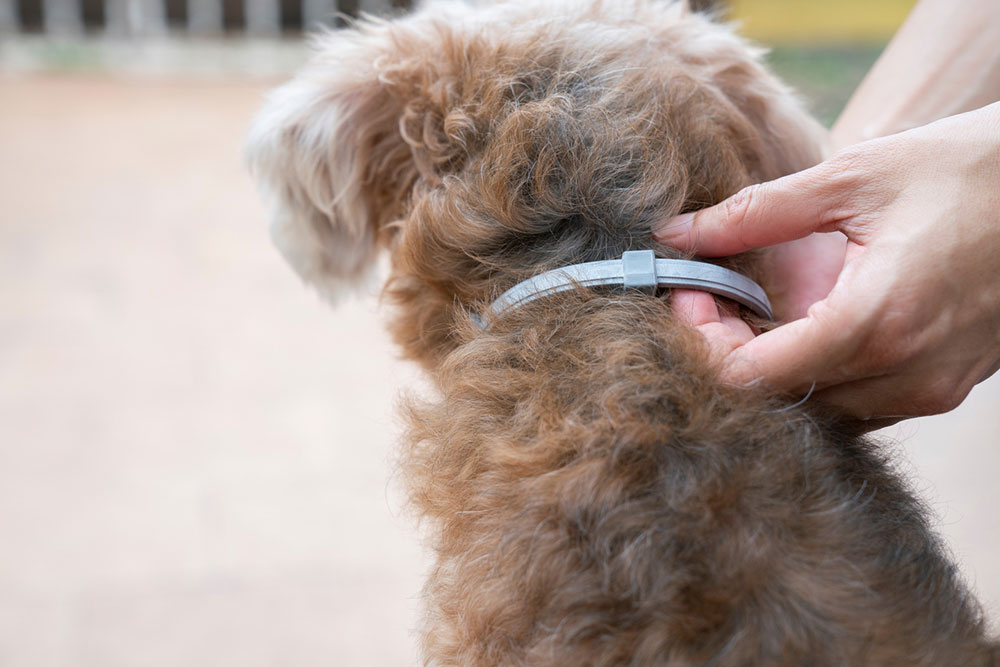
8 common mistakes when using flea and tick collars on dogs
Pet parents do everything it takes to ensure their dog is in good shape. They play with them, engage them in various fun exercises, prepare nutritious meals to boost their strength, and do so much more. But one thing many struggle with is the constant attacks by ticks and fleas. Although certain pet collars help control infestations caused by these parasites, they must be used correctly for the best outcome.
Getting a poor fit
Any collar for pet dogs, including a flea and tick collar, must fit properly. If it is too tight, it may cause skin irritation, hurt the dog, and even leave it gasping for air. On the other hand, a loose collar may fall off or have no contact with the pet’s skin, which is necessary to repel pests and insects. If unsure whether the size is right, pet parents must check if two fingers can pass between the collar and the dog’s neck. Of course, some collars are adjustable, so if the dog’s neck is thin or broad, one could easily adjust the fastener. That way, the collar will sit as tight as possible without causing inconvenience. Everything should be fine if the pet’s neck is 35 cm in volume and the collar is adjustable up to 40 cm.
Not checking it frequently
Pet parents might assume the tick and flea collar is a permanent solution, but that’s never the case. The collar has a limited lifespan and will require frequent checks to ensure it is still working to prevent pest infestations. That’s why one should inspect it physically and look for damage or wear and tear signs. If there is damage, the ingredients meant to stop ticks and fleas might leak out or become ineffective. Checking the collar once a month can prevent that and ensure the collar is still effective.
Using old and expired collars
Sometimes, one might buy a collar in a hurry but only use it the following season. This is a common mistake as flea and tick collars degrade with time. Each collar has a particular lifespan, ranging from three to eight months, based on the brand and quality. When the collar expires, the chemicals responsible for repelling the pests will not be as effective. So, one should always check the expiration date before buying a tick and flea collar for their pets. One could write this date on a calendar as a reminder to change the flea and tick collar later.
Using it on puppies that are too young
A tick and flea collar is designed for dogs of a particular age, so using it on puppies that are too young is a grave mistake. Most collars contain chemicals that might be harsh for puppies and adversely affect their health. A few possible effects include excessive salivation, skin burns, and neurological problems, all of which could endanger a puppy’s development. Manufacturers typically list the recommended age on the product’s packaging. Most flea and tick collars are for puppies over eight weeks old, but one might also find options suitable for pups over 12 weeks.
Failing to monitor reactions
When using a flea and tick collar, it is important to be vigilant about potential reactions. Pets can be sensitive to the product’s ingredients and develop unusual symptoms after wearing them. While some symptoms may surface immediately, others may take a few days. A few potential signs include itching, whining or excessive clawing, hair loss around the neck, and redness. When applying the collar, one must observe the dog closely for at least 48 hours. If there are any signs, one should immediately remove the collar and contact a vet for the appropriate management options.
Buying a low-quality collar
While most tick and flea collars may claim to offer superior protection, not all live up to their promises. This is especially true for collars that are available at a lower price. Even if the manufacturer makes attractive claims, cheaper options might not be as effective. After one uses it on their pet’s neck, it might not repel ticks and fleas. That’s why one should consider buying from reputable brands. While these products may cost more, they will offer better protection against infections.
Neglecting a vet consultation
A local pet store may have multiple tick and flea collar options. These may even come with instructions that help assess the dog’s breed, age, and size the collar is suitable for. S ince each dog is different, the only way to ensure a collar is safe is by consulting a vet. The professional may perform a series of tests to determine if a pet may have any adverse reactions to the collar and could recommend the right type.
Leaving the house unclean
Some think a pet collar is the best defense against ticks and fleas, but that’s not true. If the house is dirty, these insects could cause trouble even after the dog wears the collar. So, pet parents also need to clean the home regularly and maintain hygiene. Ticks and fleas could live for months in hard-to-reach spaces such as carpets, furniture, and the backyard. Proper cleaning could ensure the flea and tick collar works to its full potential when protecting pets against infestations.





